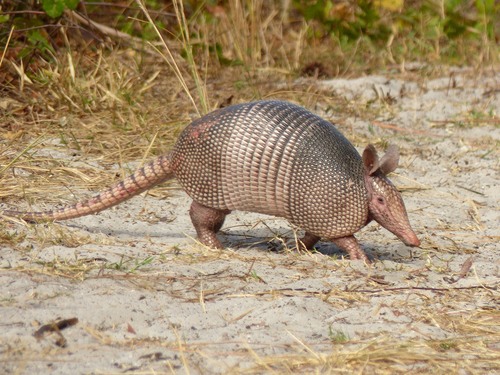
Nine-banded armadillo
The Nine-banded Armadillo boasts a unique armored shell, enabling it to thrive in diverse habitats from Texas to Argentina. Its nocturnal foraging and ability to float across water highlight its adaptability, making it a fascinating wanderer of the Americas.
12-15 years
Lifespan
Least Concern
Conservation Status
Stable
Population Trend
Distribution Range of the Nine-banded armadillo
The nine-banded armadillo (Dasypus novemcinctus) is native to the Americas. Its geographical distribution spans from the southern United States, throughout Central America, and into South America, reaching as far south as northern Argentina. It is commonly found in countries such as the United States, Mexico, Costa Rica, Colombia, Venezuela, and Brazil.
Nine-banded armadillo's Habitat
Environmental Conditions
This species typically inhabits diverse environments, including forests, grasslands, and semi-deserts. The nine-banded armadillo prefers areas with loose, sandy or clay soils that facilitate digging and burrowing. It is generally found in regions with warm climates, as it has low metabolic and temperature-regulating capabilities.
Ecological Niche
Dasypus novemcinctus plays a crucial role in its ecosystem as both a forager and a soil engineer. It primarily feeds on insects, including ants and termites, but its diet can also include small vertebrates, plants, and carrion. The armadillo's burrowing behavior aerates the soil, promotes plant growth, and creates habitats for other species. Its ecological niche involves ground-level foraging and soil modification, and it is adapted to a nocturnal lifestyle to avoid the heat of the day.
Copyright @ Nature Style Limited. All Rights Reserved.
 English
English